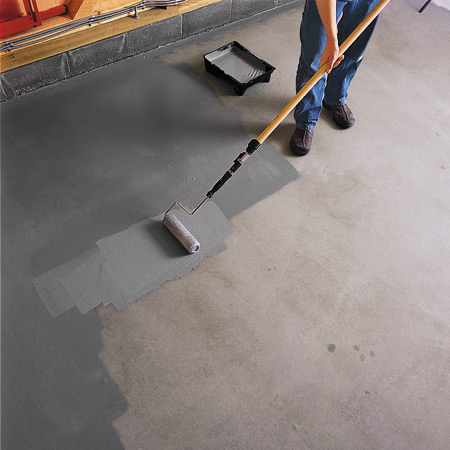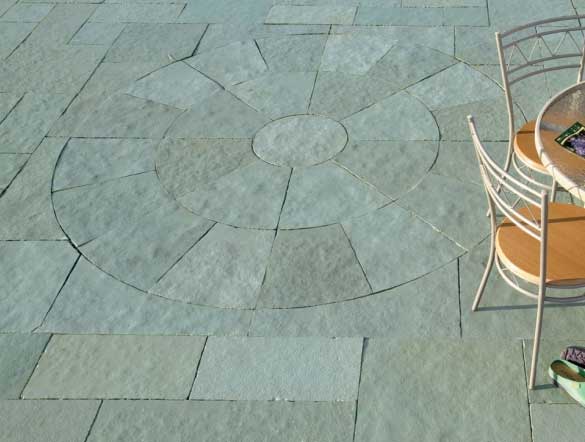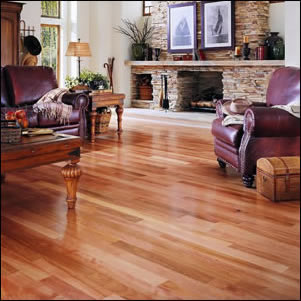Your floor is constantly is walked on, so, as well as being pleasing to look at, your choice needs to be appropriate for the room. Flooring can be used to provide background color and texture, helping to anchor and balance a decorative scheme.
Wood
Wooden floors suit both traditional and contemporary interiors, bringing warmth and charm to both styles. The best timbers for flooring include oak, maple, ash and beech. Most modern wooden flooring is made from tongue-and-groove boards which, when laid, help prevent draughts.
Because of the range of shades of natural wood and of the glazes available to seal timber boards, it is possible to find a wooden floor that suits almost every color scheme. Pale wood shades such as ash and beech help lighten the room, while darker tones create a warm, cosy look. If you would like the floor to have an established look, choose an oiled finish rather than a glossy varnish. In period properties it may be possible to sand the original wooden floorboards, which can then be painted or stained to hide any blemishes and to suit the room’s decor.
Solid wood or Laminate?
New wooden floors range widely in style and price. A solid wood floor, made from boards or blocks of a specific hardwood, is a big investment, so if the budget does not stretch to this consider engineered boards or laminate wood flooring, which are man made alternatives designed to resemble solid wood. Once installed they can look indistinguishable from a solid wood floor.
Engineered boards, also known as multi layered boards, are a high quality alternative to solid wood, and are made from several layers of one hardwood.
Laminate flooring is wood-effect flooring, and the many products available vary wildly in quality and longevity. It is usually constructed from a thin silver of hardwood veneer pasted on to board, which is made from an inexpensive wood alternative such as plywood. Some inexpensive laminates use an image of the wood printed on to paper rather than a hardwood veneer.
Reclaimed flooring is another readily available wood flooring option and many antique boards have a wonderful patina. You may need to sand and/or seal the floorboards once they have been installed.
Whichever style you choose, the new wooden floor will need to be laid across the existing sub-floor. Allow the floor to acclimatize to the room before it is laid. The installation cost ill vary according to the nature of the wood, the style of flooring, and whether you need the boards to be stained or sealed once they are in situ.
Stone
Quarried for centuries all over the world, and the flooring of choice in our most venerable buildings, stone floors develop a patina with age which only improves their natural good looks.
Limestone, sandstone and slate are the most commonly used stones, together giving a choice of shades from creamy whites, yellows and greens right through to the darkest black, and including interesting natural textures and patterning.
Hard-wearing and long lasting, stone floors are another investment buy. For a more inexpensive option, go for slate tiles or reproduction stones, which are designed to resemble ancient flagstones but come without the accompanying price tag. Reclaimed stone tiles or flagstones are another option.
Always choose a professional installer to lay a stone floor. You will need to discuss your floors suitability for stone with the installer before you buy, as heavy stone slabs should be laid on a concrete sub floor. If you are looking for stone flooring for an upstairs room, or you live in an apartment that’s several floors up, you should choose stone tiles because they are thinner and lighter than flagstones.
Tiles
Tiles for floors vary widely in size, style and shape, from colorful porcelain tiles with textured finishes to rustic terracotta squares and delicate mosaic tiles. Hardwearing and waterproof, floor tiles are a good choice for bathrooms and kitchens and some suit heavy traffic areas such as hallways.
Contemporary large scale porcelain tiles are becoming popular for family rooms such as kitchen/dining rooms, living rooms and conservatories. They can also be used to add a designer touch to floors, and contemporary ranges include tiles designed to resemble leather, or tiles filled with tiny diamante sparkle – ideal for adding the WOW factor to bathrooms or shower-rooms.
Quick Trick
Most terracotta tiles need to be sealed once laid to ensure they are waterproof. Instead go for pre-sealed terracotta tiles to save your time.
Other Types of Hard Flooring
There are plenty of man-made and natural varieties of hard flooring to choose from:
Vinyl
Vinyl flooring ranges in style from inexpensive tiles to top quality vinyl that’s designed to resemble natural materials such as stone. It comes in sheets or ready-cut squares, and can be a good budget choice.
Linoleum
A natural product made from a mix of ingredients that includes ground limestone and linseed oil, linoleum is hard-wearing and versatile hard flooring which comes in a variety of colors. It can be laid in various ways, either as sheet flooring or as tiles.
Concrete
A new concrete floor requires sealing to make it water-resistant, and it can also be painted with specialist concrete paint to make it fit in with the rest of the room’s scheme. Alternatively, polishing a concrete floor to a high-gloss finish adds a modern look to the room.
Rubber
Available in a huge range of colors and textured finishes, rubber flooring is also highly practical; it’s hard-wearing, non-slip and easy to clean. Perfect for kids’ playrooms, it also suits kitchens and bathrooms.
Cork
Soft and warm underfoot, cork tiles are porous and must be sealed before use. Cork tiles come in natural colors, or laminated with photographic images.
Carpet
Wall-to-wall fitted carpets have timeless appeal. They are soft and warm underfoot and therefore perfect for draughty floors and bedrooms.
As carpets are chosen to last, ensure you’re buying the right carpet for your room. 100% wool carpets are a luxurious choice that suit lighter traffic areas such as dining rooms, bedrooms and sitting rooms. For busier areas, with a lot of toing and froing, such as hallways and stairs, the more standard 80% wool/20% nylon mix is harder wearing and will last longer.
Rugs
Rugs and runner are an excellent way to bring color and pattern to your floors. Flat-weave rugs with geometric patterns or cheerful colors are a good choice for hallways or kids’ room, and kilims and dhurries imported from Asia or inexpensive washable cotton rugs are all an instant way to add splashes of bright color to any floor.
Natural Flooring
Sisal, sea grass, coir, jute, rush and paper is the most common forms of natural flooring. Each comes from natural and renewable sources such as grasses and the leaves of plants, and paper flooring is derived from wood pulp. These sources ensure that natural flooring is an environmentally friendly option for the ecologically aware consumer. They come in a range of natural, neutral shades and are woven into different finishes, textures and patterns that suit both contemporary and traditional interiors.




